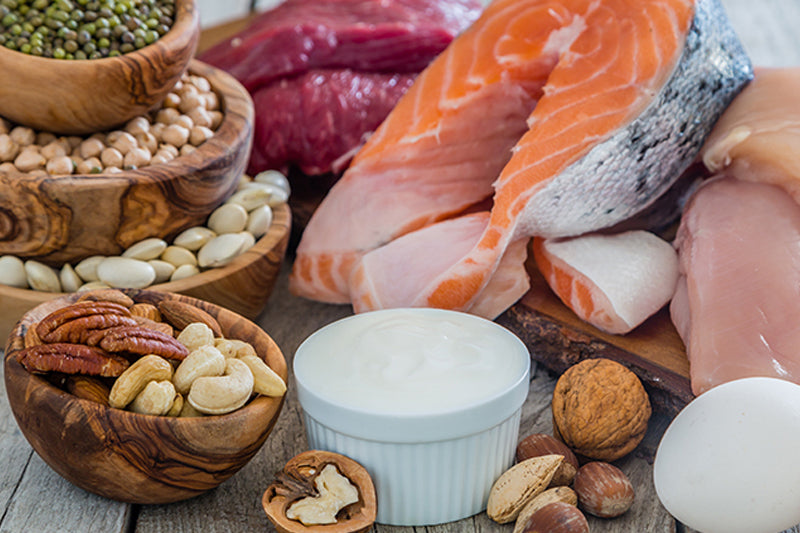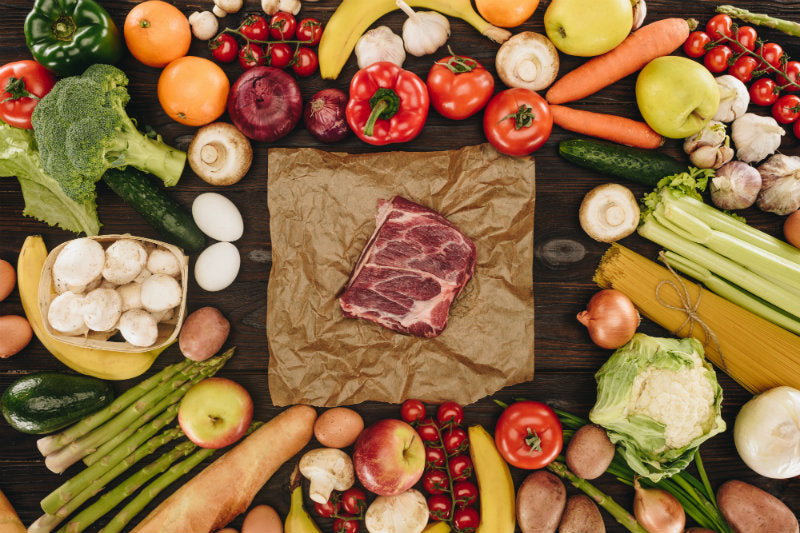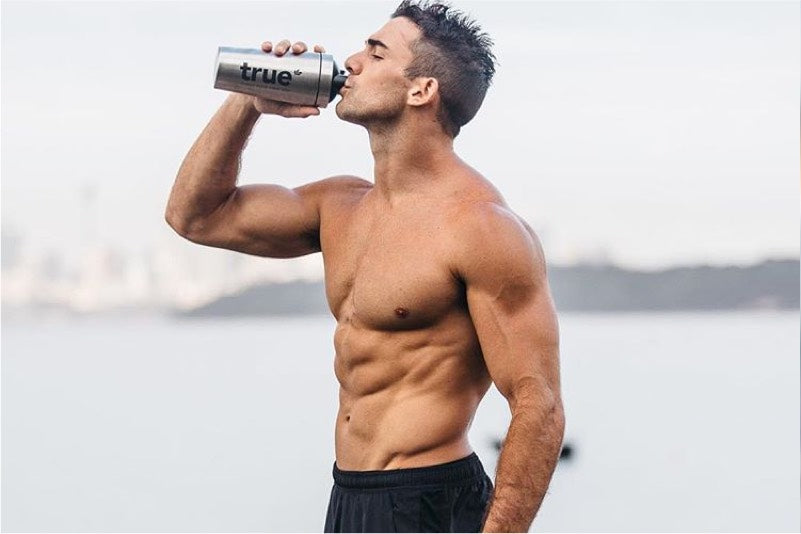Amino acids have rightfully received the title the building blocks of protein, (even the building blocks of life), as protein is contained in every single living cell in our bodies.
So what are exactly amino acids?
Look at it this way:
Protein is the main element involved in the formation and repair of our bones, muscles and skin. Now, when we take protein through red meat, nuts, poultry, fish, or dairy products, our body digests it, leaving amino acids.
Amino acids can be classified into three groups:
- Essential that our bodies cannot produce;
- Non-essential that are produced in our bodies;
- Conditional which are usually not essential, except in case of illness or stress.
Our body uses amino acids to make protein and help our bodies grow, repair tissue, break down food, and perform a number of other important functions.
For the following article we’ve decided to extract the most important information on the essential amino acids, as well as several non-essential amino acids. These have managed to take the fitness world by storm in the past several years, due to the endless list of benefits that comes with them.
(Note: While we advise you to inform yourself on the benefits of all amino acids and foods you can find them in, we’ve drafted this article in such way that you can also skip on to any of the amino acids you are particularly interested in.)
Non-essential and conditional amino acids
Essential amino acids
Are you wondering why they have been awarded with the epithet essential? Due to the fact that they are fundamental for our wellbeing. However, they cannot be synthesised from any of the materials found in our body, which means we have to get them from food.
Namely, if your body doesn’t receive the sufficient amount of essential amino acids, it will start using its own proteins, which will lead to a gradual degradation of muscles and other organs.
Histidine
An essential amino acid which helps our bodies repair torn tissue and promotes its growth.
Benefits
- Protects nerve cells
- Manufactures red and white blood cells
- Cleanses the body from toxins
- Improves digestion
Sources
- Meat, poultry and fish
- Rice
- Dairy
- Wheat and rye

Methionine
When methionine is used in combination with vitamin B6, magnesium and zinc, it improves digestion, as well as sleep, that way promoting after-workout recovery. Thanks to its 4-ingredient formula, True ZMA Blend delivers essential minerals and vitamins to support optimal body functioning.
Benefits
- Aids your body in breaking down fat, which results in the production of testosterone
- Improves digestion and heavy metal removal from the stomach and liver
- Boosts memory
Sources
- Meat and fish
- Yogurt
- Beans
- Eggs
- Seeds
- Garlic and onion
- Lentils
BCAA
Branched Chain amino acids represent the combination of three essential amino acids: leucine, iso-leucine and valine. Though the three BCAAs can be found individually, they deliver the best results when taken as one amino acid supplement and this way they come in the correct ratio (2:1:2).
Benefits
- Help repair and maintain the health of the muscle tissue
- Play an important role in workout performance
- Boost after-workout recovery
Sources
- Meat and fish
- Dairy products
- Eggs
- Soybeans, lima beans and baked beans
- Whole wheat
- Brown rice
- Corn
- Nuts (almonds and cashews)
Lysine
A critical amino acid supplement popular among bodybuilders, and a primary supplement for growth and development.
Benefits
- Aids in calcium absorption
- Balances nitrogen
- Helps in the production of hormones and antibodies
- Maintains lean body mass
- Prevents fatigue and other negative effects that come with high intensity training
- Promotes muscle growth
Sources
- Dairy products (milk and cheese)
- Eggs
- Meat
- Potatoes
- Yeast
- Lima beans
Threonine
Threonine is most important as its balance of protein and production of collagen and elastin, are the two most vital biding substances in our body.
Benefits
- Helps uphold the immune system and liver
- Breaks down fat
- Assists collagen and elastin formation
- Promotes growth and activity of the thymus
- Enhances the absorption of other nutrients
Sources
- Dairy products
- Meat
- Eggs
Tryptophan
As a serotonin precursor, it enters the brain cells to form it. As a supplement, it boosts serotonin production and thus increases our tolerance during a workout.
Benefits
- Produces serotonin
- Regulates mood and increases the feeling of happiness
- Reduces pain levels
Sources
- Eggs
- Soybeans
- Dairy products (cheese, milk)
- Meat (pork, chicken, beef, lamb) and fish (salmon)
- Seeds
- Rice
- Potatoes
- Banana
- Quinoa
- Baking chocolate
Phenylalanine
Among bodybuilders, you’ll hear the benefits of phenylalanine in terms of muscle contraction and relaxation. Nevertheless, especially in combination with glutamine, the benefits are numerous.
Benefits
- Boosts the entire nervous system
- Improves memory and motivation
- Enables better UV ray absorption and production of vitamin D
Sources
- Dairy products
- Seeds
- Nuts
- Almond
- Avocado
Non-essential and conditional amino acids
Unlike essential amino acids, non-essential (and conditional) are produced in our body in the amount it requires for regular functioning.
Glutamine
Glutamine is a vital amino acid for maintaining a healthy immune system and gastrointestinal tract. At the same time it promotes retention and muscle growth. Since we’ve already covered glutamine on our blog, please refer to our quick guide to glutamine to learn more about its benefits.
Sources
- Dairy products (milk, yogurt and cottage cheese)
- Pork and chicken
- Spinach
Glycine
By looking at its structure, glycine is by far the smallest amino acid.
Benefits
- Treats schizophrenia
- Prevents stroke
Sources
- Meat, poultry and fish
- Dairy products
- Eggs
- Vegetables (spinach, cabbage, pumpkin, kale, cauliflower)
- Fruits (banana and kiwi)
- Beans
Asparagine
Produced by the liver, asparagine represents one of the main components of glycoprotein synthesis.
Benefits
- Transports nitrogen
- Aids in development of neurons
- Boosts stamina
Sources
- Dairy products
- Fish and seafood
- Meat (beef)
- Whey
- Eggs
- Potatoes
- Seeds, nuts and whole grains
- Asparagus
- Legumes

Aspartate
Like the aforementioned asparagine, aspartate is synthesised in the liver as well, and is known to be a negatively charged amino acid.
Benefits
- Increases solubility of copper, iron, zinc and magnesium
- Stimulates NMDA receptors which are important for normal memory function
Sources
- Meat
- Oysters
- Sprouting seeds
- Avocado
- Asparagus
Carnitine
According to the National Institute of Health, carnitine moves fatty acids into cell mitochondria in order to be burned for energy; and the more you burn, the more weight you will lose.
What is interesting to note about carnitine is that is not a real amino acid, but is classified as one due to its structure. It comes in four forms: L-carnitine, Acetyl-L-carnitine, D-carnitine and DL-carnitine.
P.S. Carnitine is also about to be covered as a separate topic on our blog, so stay tuned for more info on this amino acid and its forms.
Benefits
- Produces energy
- Promotes fat loss
- Improves the anti-oxidising effect of vitamins E and C
Sources
- Meat (chicken and red meat)
- Fish
- Milk
Arginine
The benefits of arginine are prominent among menopausal women, as its additional supplementation can reduce the common symptoms (eg. hot flashes) by improving blood circulation.
Benefits
- Improved blood circulation
- Increased muscular strength during a resistance workout
- Retains nitrogen, a key element for the synthesis of muscle protein
- Enhances immune system
- Affects the size of the thymus gland
- Controls weight by limiting the storage of fat and promoting muscle growth
Sources
- Nuts
- Whole wheat
- Seeds
- Rice
- Raisins
- Soy
- Chocolate
Cysteine
Cysteine represents a vital component of life, and among many things, bodybuilders praise its power to maintain a healthy metabolism.
Benefits
- Improves skin health
- Helps body detoxification
- Participates in the production of collagen
- Protects liver
Sources
- Poultry
- Eggs
- Garlic and onion
- Wheat
- Broccoli
- Peppers
Supplementation
Keeping an exact track of amino acids you take on a daily basis will be difficult and also unnecessary, if you vary your meals in such way that you include food rich in protein. Nevertheless, if you’ve skimmed through the above-listed sources of amino acids and noticed that you don’t eat certain foods, either because you don’t like the taste or your body cannot digest them, remember - it is not something that should worry you.
Why not? Allow us to explain:
For instance, if you are lactose intolerant, vegan or vegetarian, certain foods which contain an abundance of protein never find their way to your plate. In that case, you are able (and highly advised) to supplement them with plant based proteins, or rather chemical supplements.
Let’s take glutamine as an example - as most people get it from dairy products and meat, those whose nutrition plan doesn’t contain either of the two are likely to possess lower levels of glutamine in their body. In that case you can opt for True Glutamine which is produced from vegetable-based fermentation and boosts most important muscle building functions.
Bottom line
Though amino acids are an essential element in every healthy dietary plan, it does not mean you need to find a place for them in every meal - the secret is getting a balance of amino acids over an entire day.
Certain foods, when consumed together, complete their protein profile (i.e. provide the body with all essential amino acids. Nevertheless, it is not necessary to remember all the food sources that can be found in them - eating an abundance of protein in most of your meals is enough. Focus on including whole grains and healthy fats and be sure you are covered for the day. Check out our Performance Range for more.








